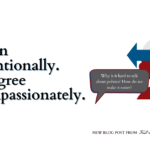
by Steve | Aug 8, 2018 | Uncategorized

Social media is one of the most controversial yet common parts of society today. Almost everyone has a social media account (or several), and while many of us enjoy connecting with friends and family, there are many downsides to social media as well.
Take freedom of the press, for instance. How do you think social media has influenced journalism today: for better or for worse? Let’s examine some of the potential threats that social media poses to our basic press freedoms in the US and abroad:
Inconsistent censorship policies
Facebook, Twitter, Instagram and other major social platforms are regularly criticized for their unclear censorship policies and potential biases against certain individuals and groups. Regardless of one’s political affiliation, we can see how this lack of clarity when it comes to which content is accessible to the public can be damaging for small-time journalists who may be censored for publicizing their opinions on social media.
So how do social media platforms differentiate between truly credible journalism versus fake news or borderline libelous content? For the time being, they’re trying to rely on artificial intelligence to sort the good from the bad, but since the algorithm isn’t perfect, some journalists may fall through the cracks and face stringent censorship policies.
Doxxing journalists
The term “doxxing” refers to the act of gathering and publicly posting someone’s personal information online for the purpose of intimidation. This is an alarmingly frequent tactic used against journalists in order to punish them for unfavorable reporting or frighten them out of their jobs. Doxxing would arguably not be as effective without social media, which allows for the rapid sharing of the most private details about another person for the purpose of harassing, stalking or intimidating them.
If journalists are not free to perform their jobs without fear of getting doxxed as a result of their reporting, then how can we possibly ensure the news we are getting is accurate and not at all influenced by such intimidation tactics?
#FakeNews
A recent study conducted by computer scientists found that an average of 59% of social media users share content without ever clicking on the link they’re sharing! This presents a gloomy outlook for legitimate news organizations that are trying to promote truthful, ethical journalism amid a sea of fake stories with clickbait headlines that are specifically designed to evoke emotional reactions to that content, regardless of it’s actual validity.
In this sense, the spread of completely false information threatens legitimate journalism outlets just as much as the #fakenews label thrown around on social media. This false information distorts our perceptions of reality and makes it more difficult to believe anything we read.

by Steve | Jul 25, 2018 | Uncategorized

Fear appeals are commonplace in political rhetoric and advertising campaigns, but they can have a damaging effect when enough people are quickly persuaded before taking the opportunity to critically deliberate the validity of these appeals.
Also referred to as “fear-induced persuasion,” fear appeals are designed to convince an audience of an idea with horrifying imagery and dread-filled rhetoric. For instance, you might’ve seen some anti-smoking ads that used fear appeals to convince others to stop smoking by showing graphic images of a long-time smoker’s lungs or letting someone with severe emphysema narrate an anti-smoking commercial.
While fear appeals aren’t always bad (e.g., ads to stop people from drunk driving), they can significantly influence our public discourse, for better or for worse. Let’s explore how this happens through some contemporary examples:
Emotionally Charged Rhetoric
Fear appeals almost always start with emotionally charged rhetoric, which involves words and phrases with unfavorable connotations applied to a target. In political and everyday speech, there are several relevant examples of emotionally-driven rhetoric:
And the list goes on and on. The fact of the matter is: it’s important to recognize how emotional language can distort our perceptions of the truth and cause us to react negatively before we even consider all the facts surrounding the individual or group targeted by fear appeals.
Constructing the Enemy
This brings us to the concept of constructing the enemy. Historically, Germany’s Nazi Party offers one of the most recognizable forms of enemy construction, in which a propaganda campaign led to the mass extermination of millions of Jews (who they blamed for poor economic conditions in the country at the time).
In a nutshell, “constructing the enemy” involves extensive rhetorical efforts (using speech, images, “experts,” cherry-picked examples blown out of proportion, propaganda campaigns, etc.) to designate a group of people as an enemy. After 9/11, the uptick in society-wide Islamophobia demonstrated the powerful persuasive appeal of American politicians’ rhetoric about Muslims. Nowadays, the notion that “illegal immigrants are stealing our jobs” is one of the most common examples of fear appeals that is used to justify tighter immigration policies.
How is the First Amendment Involved?
Free speech is one of the essential cores of the First Amendment, but it isn’t 100% unrestricted, according to historical legal precedents. For instance, in the 1969 Supreme Court case, Watts v. United States, it was found that threats must be considered separately from constitutionally protected speech (especially when they’re “true threats,” which may be prosecuted under the law in order to prevent fear, disruptions and violence arising from genuine threats).
A more recent (and complex) example would be that of InfoWars‘ host Alex Jones’ involvement in a lawsuit initiated by parents of Sandy Hook shooting victims, after he claimed the deadly school shooting was a hoax. This is a different kind of fear appeal, in which Jones reduced a real tragedy to a made-up incident, blaming gun control activists for using a fearful “narrative” of children dying in school shootings to get more gun control policies passed in state and federal legislative bodies. In other words, Jones labeling the Sandy Hook massacre as a hoax could be viewed as a fear appeal designed for a pro-2nd Amendment audience.
As we can see, fear appeals are extremely persuasive, both in the US and abroad. Even when they have little to no basis in reality, they can significantly alter public opinions about certain individuals and groups, which could potentially lead to violence against these scapegoated groups. As fervent supporters of constitutional rights for all Americans, we must recognize how fear appeals can subtly change our perceptions of reality and use our First Amendment rights to speak out against fear-based rhetoric that our politicians, media outlets and companies use on a daily basis.

by Steve | Jul 13, 2018 | Uncategorized

When it comes to the news, most people can agree on one thing: few, if any, media organizations are completely unbiased. However, there’s a growing number of people who completely disbelieve anything published by news organizations with long-standing histories of credible reporting, thanks to the recent uptick in “fake news” rhetoric.
To overcome this growing crisis for our First Amendment rights in the US, we can start by recognizing how the existence of a free press is dependent on public trust in its institutions:
Speaking Truth to Power
The reason why freedom of the press was so important to our Founding Fathers is because they recognized how abusive a governing body can become if there are no checks on its power over the people. Throughout history, news organizations have served as checks against the government by reporting any factual gaps between political rhetoric and reality.
The media is responsible for speaking truth to power by reminding citizens how their representatives are voting, exposing scandals and corruption in all levels of government, and critiquing governmental attempts at propaganda to pull the wool over citizens’ eyes. Without public trust in the media, then who are we supposed to believe? Politicians? Talk show commentators? Satirists? Ourselves?
Informing the Citizenry
The media cannot help citizens stay informed about issues that affect them (both directly and indirectly) if those citizens don’t believe anything the media reports. For instance, it would certainly be easier to ignore the suffering and horrors going on around the world – be that ISIS operating in the Middle East, Syrian refugees drowning in the Mediterranean Sea, North Koreans facing death by starvation in their dictatorship society, or even homeless people dying right here at home in the US.
However, it’s important for us to acknowledge what’s going on because change would not be possible without outraged citizens vocalizing their dissent in the form of protest, critiques published on blogs or social media, voting, and other forms of activism. Since individuals do not possess the resources (money, time) to report on issues happening all over the world (or even in our own backyards), it’s up to the media to help us stay informed. But how can the media perform this crucial task if citizens refuse to believe anything the media reports is true?
Funding Diligent Reporting
Newspapers are in crisis mode, with the news industry’s subscriber figures and advertising revenue plummeting year after year. There are many possible explanations behind the decline of American news, but some of the most likely explanations are that fewer Americans are interested in reading the news (especially if they have to pay for it) and fewer Americans trust the news to provide accurate information and unbiased reporting thanks to all of the “fake news” accusations being thrown around in public discourses.
With rapidly decreasing funds for journalists, printing presses, news circulation, website maintenance, and all the other expenses involved for news organizations, how will they continue to fulfill their roles as public informants and government watchdogs? Some people have advocated for citizen journalism, but this is not a viable alternative to professional, trained journalists with minimal bias, ethical standards to adhere to, and enough time and dedication to uncover all the facts involved.
This means that public trust is extremely important when it comes to funding news organizations. If the public doesn’t trust the news, then they won’t pay for the news And as the old adage goes, “you get what you pay for” – in this case, we’ll get low-quality “journalism” from random internet bloggers and possibly fake news sources with hidden ideological agendas.











